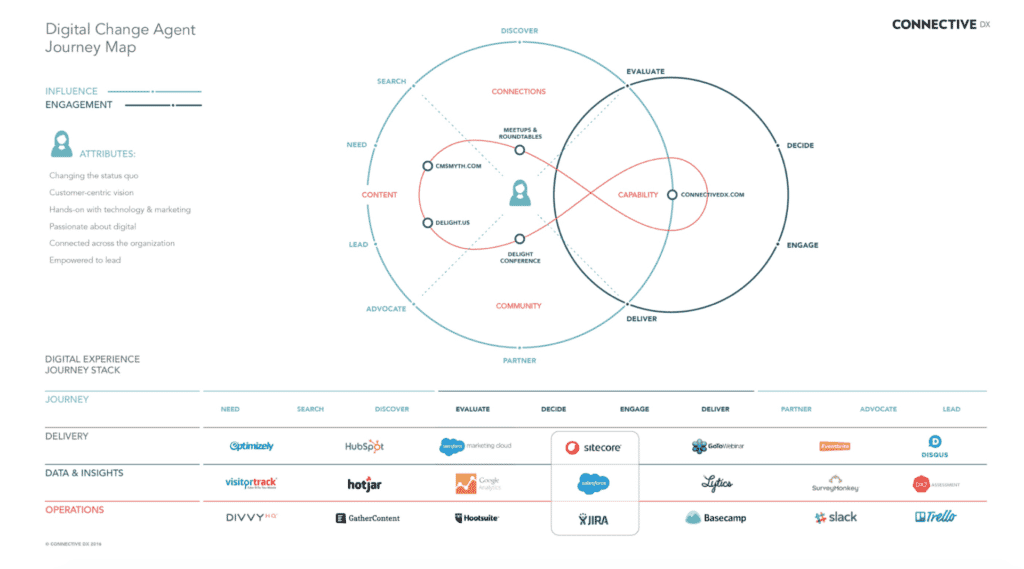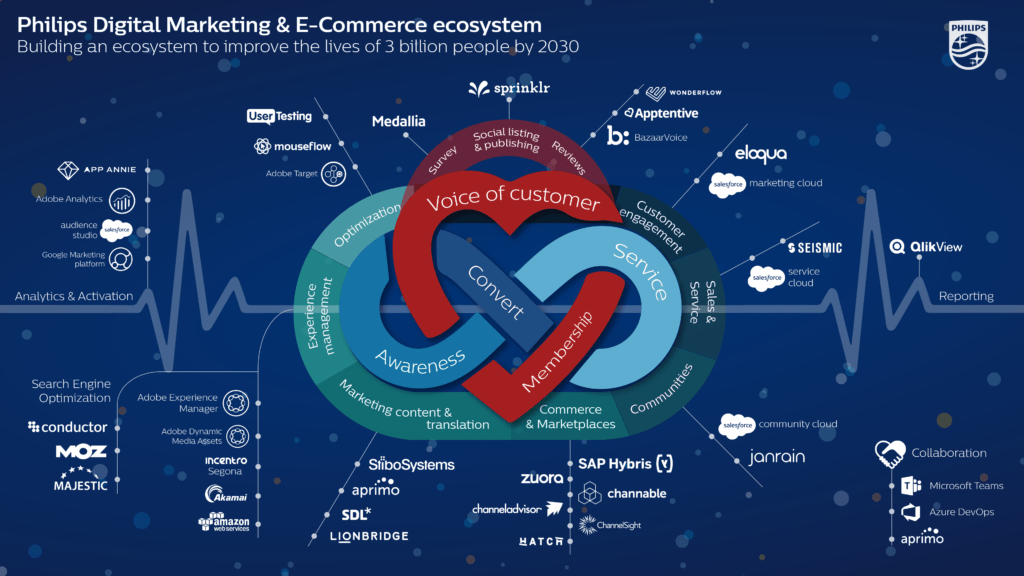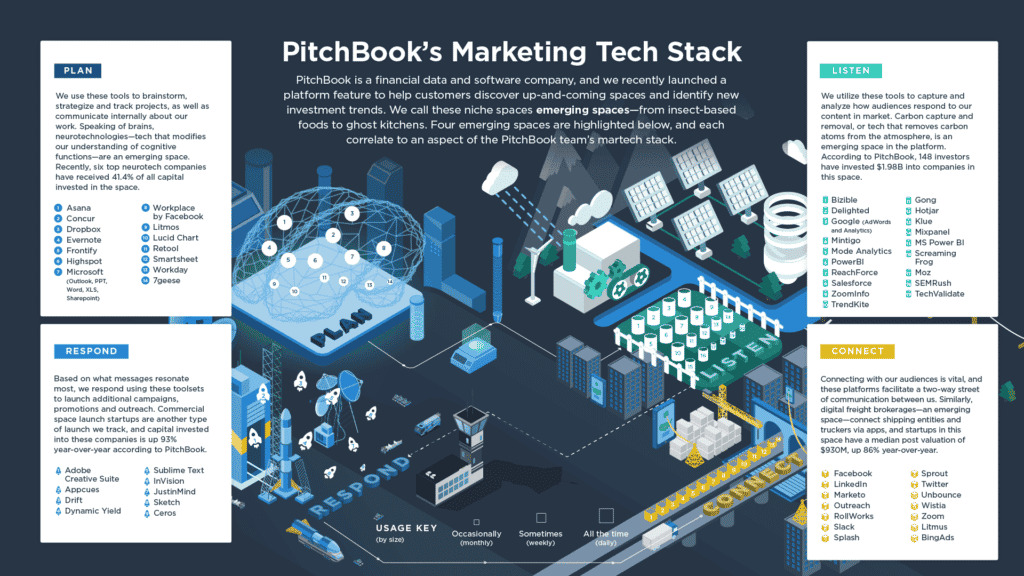When creating a transparent marketing and sales organization, ensuring everyone understands the company’s tech stack and how each piece fits together is essential. From questions about capacity to considering new technology, the first step is to provide define the purpose of each tool to assess if each is meeting the needs of the business.
First, here is an example of a sales and marketing tech stack diagram looks like that clearly outlines which stage in the customer journey the tool supports.

What, How, and Why of Your Tech Stack Diagram
The three components of any tech stack diagram are the what, the how, and the why. Asking yourself each of these questions will allow you to build a sensible diagram for your company and will make sure you don’t overlook important details.
Step 1: Take an inventory of WHAT tools are in your tech stack
Beginning with the what, evaluate the pieces of technology in your tech stack. These are the subject of your diagram, and to accurately execute this project, you should first have a firm grasp of what to include in it. Each tool used should be featured, and its purposes should take center stage. Take time to think through each element and its role independently and with the rest of your tech stack.
Step 2: HOW does that data flow through your systems
By taking an inventory of each tool in your stack, you can start outlining how each tool’s data flows through the rest of your stack.
TIP: Draw a line on your diagram to indicate if a sync is single or bi-directional.
As you embark on the journey to create or update your tech stack diagram, prioritize seeing the bigger picture and emphasizing the interconnectedness of your tools. Especially in more advanced organizations, few tools are entirely standalone. More often than not, one tool relies on several others. A benefit to mapping out your tech stack is seeing how your team and technology are operating as a unit. By doing this, you will better understand whether or not each system is used to its full potential and identify functionality gaps. This will guide your entire team to better utilize the tools already on board and is key to any good tech map.

Finally, as you craft this diagram, take time to define why you’re making it. What business value is it adding to your organization? This purpose will enable you to tailor it for your specific needs and results in a final product that feels more impactful to your organization. It could be for a particular metric you want to reach, a program you want to develop, or the benefits it will have on company culture. Knowing what you’re hoping to get out of this exercise will make it easier to cater to your team’s needs.
Making Your Stack Transparent
Whether you’re creating your tech stack diagram from scratch or are simply reevaluating your current drawing, prioritize this exercise as a crucial part of building a transparent environment. A thorough understanding of how the technology functions play a significant role in any conversation involving strategy and performance; it’s impossible to assess where your platforms are meeting expectations versus where they’re lacking without knowing how each component is used. Regarding inter-team collaboration, looking at how a particular department operates gives a more transparent view of timelines and project completion, which builds deeper trust than being told expected deadlines.

Visibility also works to keep your tech stack manageable and effective; without a high-quality diagram, teams often invest in new tech solutions while unknowingly underutilizing an existing tool that could meet business needs. Instead of adding a separate component to take care of a task that is achievable with what you already have, a second look prevents unnecessary additions that only create more to monitor.
Take the opportunity to build a map that serves both marketing operations and the rest of the company—doing so positions your team to maximize its success and avoid delays caused by unclear processes or underutilized platforms. It is a helpful look into what your team does for other areas of your organization. Continue to evaluate and refine this diagram as your organization progresses, and prioritize this resource as a needed part of a transparent and trusted company.

